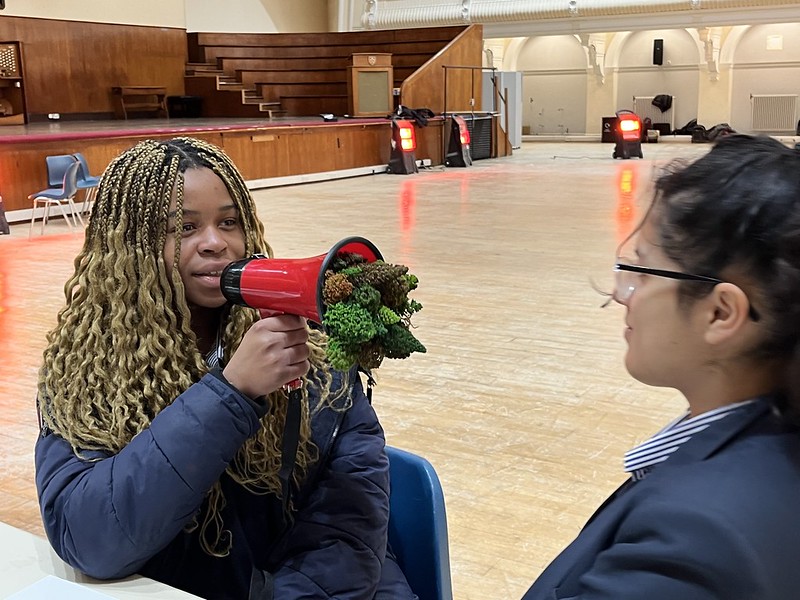
You might have seen my piece arguing for Activation Not Communication in public engagement of climate & nature. I’m building on that to explore what kind of narrative experiences might help to activate people. I have two propositions:
One is that we need to shift from Positive Stories to Powerful Stories. And, that Powerful Stories can come out of Possitopian practice, which is less about hope or positivity per se, and more about approaches that integrate realism about the crisis with the generative spirits of agency and imagination.
This post was stimulated by an ‘open space’ event a few weeks ago, hosted by UEA’s Civic University, exploring higher education and cultural sector partnerships in context of big challenges such as the Earth crisis. It asked how can these partnerships help creativity to flourish in East Anglia? The invitation implied (although not making overt) that creativity is vital for us to collaborate and tackle these grand challenges, while these challenges will also threaten and limit our capacities. Round the circle of participants, everyone spoke of needing positive stories. I hear this everywhere. I agree to a point, but too often the actual practice (in talks, media, artworks and so on) is far too wishful, too vague, too white, and not realistic enough. Nature is not just on the brink but beyond it. Climate impacts are coming harder and faster than projected. These facts don’t mean that we should despair but that the practice needs to do justice to lived experiences of impacts, to the science, to evidenced fears and risks. If it does not, it goes against any claims to be working for environmental justice.
We need to help people understand the interlinked nature of the impacts of the Earth crisis, to think beyond interventions that are easily measured or single solutions. We need to foreground stories of the experience of environmental trauma, embedded in colonialism and continuing with the global economic system that extracts and exploits.
We need to hear about activists who are prefiguring radical ways of living, and anticipating significant risks that will disrupt everything we know, using their imaginations to convene people around their visions. Here is a great example of a Powerful Story: Artists Dan Edelstyn and Hilary Powell asked ‘could we turn our house into a power station? Could the whole street be a power station?’ It’s all about power, but that’s not the only reason it’s powerful.
And, see here 100 stories of environmental activists from the Global Majority.
The second proposition arises from the first:
We need to design powerful experiences for narrative engagement on the Earth crisis, which give more time for exploring root causes and solutions and less time on impacts.
Now this might seem to contradict my points above, stating that we need to be realistic and face the impacts of the Earth crisis. Yes, we must include truths in our storytelling or engagement work. High arousal states such as fear, anger and courage are essential for triggering activation. BUT, we need to do it sensitively, with scaffolding, with appropriate pacing, and supporting people to process their feelings when discovering about those impacts.
So, here are some principles for this practice:
- Being Possitopian, of course.
- Rather than talking at people, participatory and questioning approaches work best. See my article From Communication to Activation.
- People need time and opportunities to reiterate and cycle back to initial framings, and to extend from them. Quick hits can leave people confused and resistant. After any kind of event or content, can people have conversations later? Can they get further resources to help them?
- Activities need to be scaffolded to create an increasing integration of sense, emotion, idea and action. Some people need choices, for example, so that they can stay in the emotional realm a little longer, or contribute their emotional intelligence to the group. Others might bring expertise or cognitive skills. Overall, though, the experience needs to move people on so that they can leave with a sense of action.
From delivering training, I’m realising that an effective narrative experience doesn’t start with the shock of “here’s how bad it could get” (although I have made that mistake often) but sandwiches exploration of impacts between the causes and the solutions.

It starts with the worst scenes & ends with a solution (their services).
My diagram below evokes an infinity symbol, implying that we must keep looping back, or give people opportunities to reiterate their processing. It also evokes the Design Diamond (Discover, Define, Develop, Deliver) where activities open out to multiple ideas, then close down, then re-open and close towards action. The implication here is that the ideal narrative experience to deal with the Earth crisis is actually a design process. We need to involve people in imagining ways forward, to design Regenerative Cultures.




